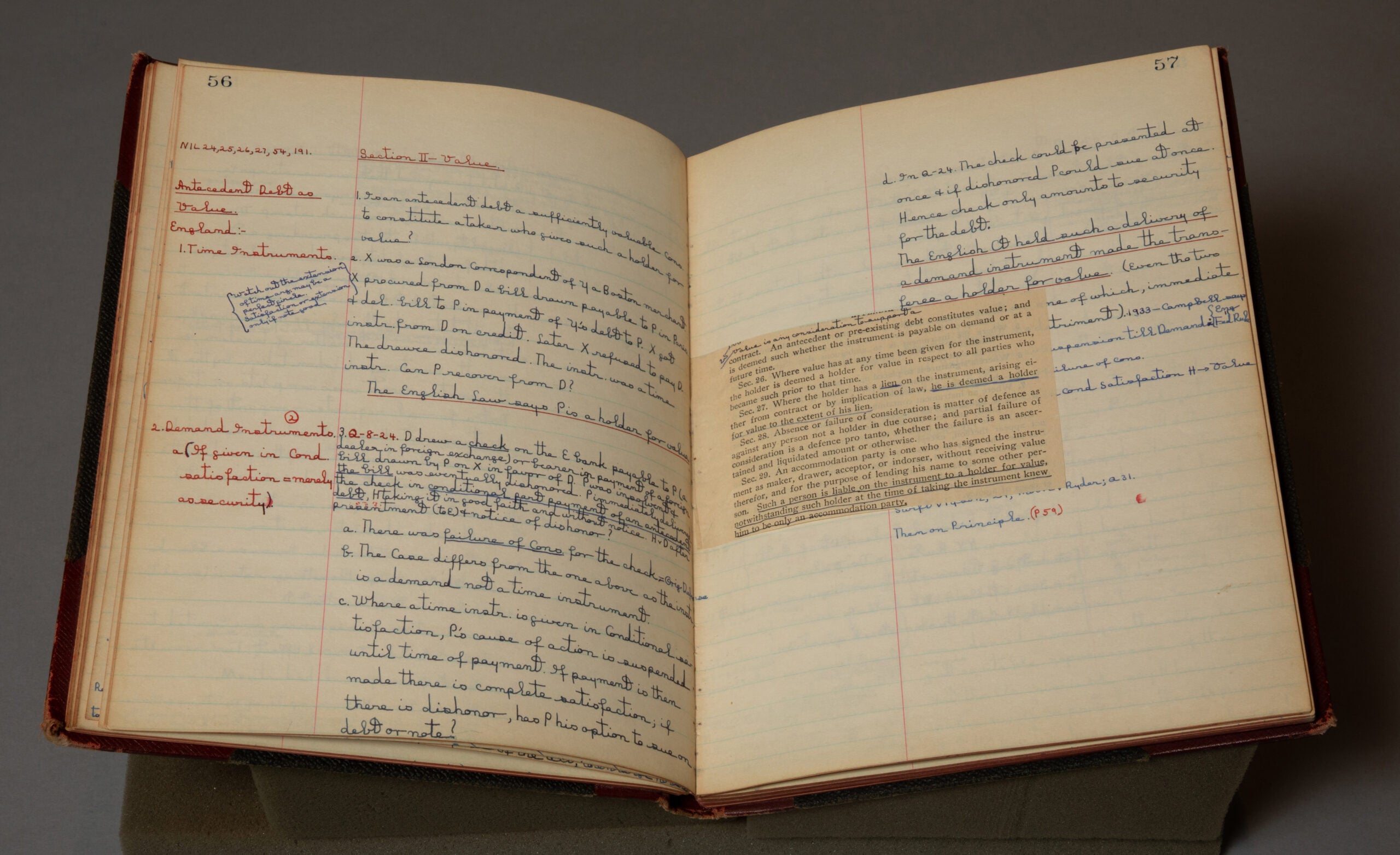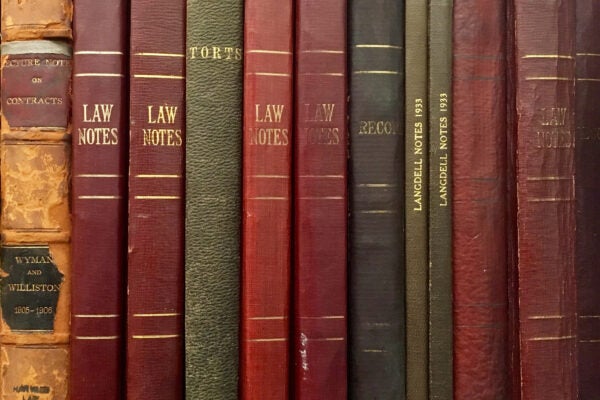Stories from the Vault Series
This series highlights popular posts from the now-retired Harvard Law School Library blog, Et Seq. When Et Seq. debuted on February 1, 2007, it was the Library’s first foray into public blogging. Upon its retirement on February 28, 2024, the blog included more than 1,000 posts covering topics such as Harvard Law School history, research tips and guides, collection highlights, and Library-sponsored events.
This 2017 post was written by Georgia Henley while she was a doctoral candidate in the Department of Celtic Languages and Literatures at Harvard University and working part-time in Harvard Law School Library, Historical & Special Collections. Georgia Henley is now Associate Professor of English at Saint Anselm College and an Associate of the Department of Celtic Languages and Literatures at Harvard University. Her research focuses on the manuscripts, literature, and history of medieval Wales and the March of Wales. Her first book is Reimagining the Past in the Borderlands of Medieval England and Wales (Oxford University Press, 2024).
View the archived web page of the original post, which is part of the Harvard University Archive’s A-Sites: Archived Harvard Websites collection.
February 17, 2017
By Georgia Henley
Many of us would shudder to imagine a researcher 100 years from now poring over our college lecture notes, scribbled in spiral-bound notebooks or, more likely, typed up in hundreds of sporadically organized .docx files. Historical & Special Collections at the Harvard Law School Library has been doing just that, cataloging a collection of over 250 students’ class notebooks amounting to hundreds of volumes. Dating from approximately 1860 to 1970, the collection represents an era that encompassed some of the most formative decades of the Law School’s curriculum and reputation. The Class Notes Collection, now fully cataloged for the first time, should be of great interest to anyone working on legal history, legal education, or the history of Harvard Law School itself.

The bulk of the collection takes the form of neatly homogeneous, crimson-leather-bound notebooks purchased from the Harvard Coop and inscribed on the inner cover with students’ names, local addresses, and desk numbers. “Louis L. Jaffe, 3 Perkins Hall,” one notebook reads. “3L, 1927-28. Property.” Many of the students’ names sound antiquated and (to this author’s ear) aristocratic; and, with a single exception, all are male. Case law is written on transparent onionskin sheets the size and shape of Post-Its and pasted in on top of lecture notes; red ink is typically used to underline and summarize key arguments in the margins. One gets the impression of a disciplined and uniform method of notetaking, taught from an early age, which gradually fell away after the Second World War and was abandoned as standard practice by the 1960s.

While the notebooks have the outward appearance of uniformity, within, they attest to rich personal histories. Exam prompts, holiday cards, and even the occasional love letter are tucked between their pages. Current law students may find comfort in the near ubiquity of question marks and crossed-out phrases (as well as large splotches of ink). Some are covered in doodles, caricatures, and exhortations (“To hell with Beale!” writes Chauncey Craven Hackett (LL.B. 1906)) in his 1905 notes on [Jurisdiction and Procedure in] Equity, taught by Joseph H. Beale), while others suggest great discipline and organization, such as the tidy script and thorough indexing of future HLS professor Austin Wakeman Scott (1884-1981). Many of the notebooks were donated to the library by graduates’ children and grandchildren, and some have been carefully typed up and bound in display volumes. Notable legal minds represented in this collection include Zechariah Chafee (1885-1957), E. Merrick Dodd (1888-1951), Felix Frankfurter (1882-1965), Paul Freund (1908-1992), and David Charny (1955-2000). Their class notes provide valuable, and perhaps otherwise inaccessible, windows into their formative years as students and thinkers.

The collection should also be very useful for the study of legal curriculum and its development across the twentieth century. While the 1L course load of Torts, Contracts, and Criminal Law has remained largely unchanged since the nineteenth century, a proliferation of electives can be observed beginning in the 1960s, yielding Soviet Law, Antitrust Law, Psychoanalytic Theory and Legal Assumptions, even a class taught by Henry Kissinger on National Security Policy in 1967. From this collection one can learn how Justice Stephen Breyer taught his class on Antitrust Law, or how Derek Bok taught Economic Regulation, through the eyes of their students. The pressures of US history are also apparent, from the cluster of deaths, withdrawals, and hastily rearranged course schedules during World War II, to notes on segregation, the KKK, and Communism in the 1940s and 1950s.

It is the otherwise anonymous, little-heard voices of HLS students across the years that form the bulk of the collection—studying for their exams, trying to remember their locker codes, and forging the opinions that have shaped legal discourse across the last two centuries. We encourage students, faculty, and researchers to come see for themselves what has changed—and what has remained the same—about the studying and teaching of law at Harvard since the late 19th century.
Find catalog records for the Class Notes Collection in HOLLIS
Start with an Advanced Search, limited to “Library Catalog.”
Under “Search Filters” select the following:
Title, exact phrase: “class notes of”
AND
Keywords anywhere, contains: “Harvard Law School”
After you select search and the results have been returned, use the Filters on the right-side of the display to limit Location to “Harvard Law School Library.”
Filed in: Et Seq
Contact Us
phone: 617-495-3455
email: asklib@law.harvard.edu
library website: hls.harvard.edu/library
Stay Connected
Library Innovation Lab (LIL) Blog
Instagram @hlslibrary
Facebook @hlslibrary
Et Seq blog (archived)
